FOR many years BP have published an annual review of global energy markets. This year the job has been taken over by the Energy Institute, but the analysis of production and consumption of energy by country remains the same.
The latest review published last week confirms what we have known for a long time. Net Zero is further away than ever in the world as a whole. These are the highlights:
- Emissions of CO2 are up by 1.2 per cent in 2024 from the year before;
- Total energy consumption rose by 2.1 per cent;
- Fossil fuel use rose by 1.5 per cent, with its share of total energy dropping only slightly from 87.0 per cent to 86.6 per cent;
- Wind and solar power share barely rose at all – from 2.5 per cent to 2.8 per cent;
- In absolute terms, wind and solar increased by 2.3 exajoules, while fossil fuels went up by 7.6 exajoules between 2023 and 2024.
In other words, despite the trillions invested in renewable energy in recent years, the growth in output last year met only a quarter of the world’s increasing appetite for energy.
The chart below of CO2 emissions shows just what an irrelevant sideshow the richer OECD countries have now become:
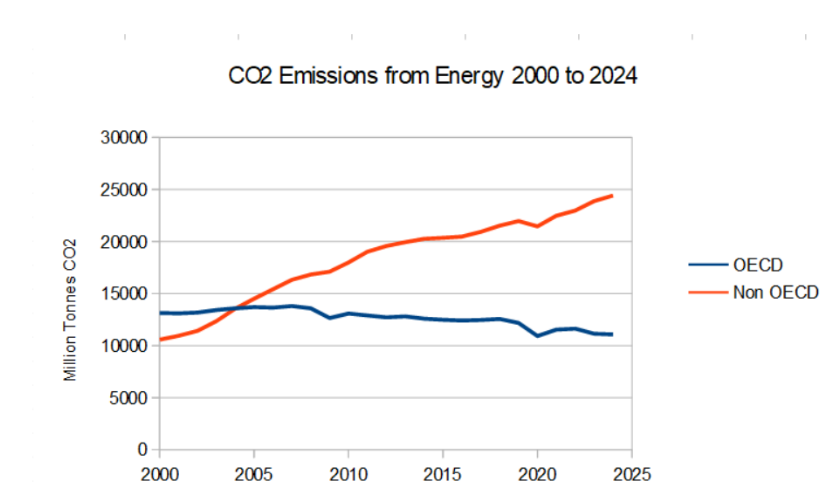
While we in the West struggle to pare back emissions at a huge cost to our economies, the developing world, which includes China and India, have been carrying on with business as usual. Since the 2015 Paris Climate Agreement, their annual emissions have increased by 20 per cent.
We all know that China continues to use more and more fossil fuels. Despite the misinformation regularly put out by the legacy media, wind and solar power in that country still sits at only 4 per cent of total energy consumption.
It is exactly the same story in the rest of the developing world. They have the sense to realise that only fossil fuels can provide the energy they need to build their economies and give their citizens the standard of living they deserve.
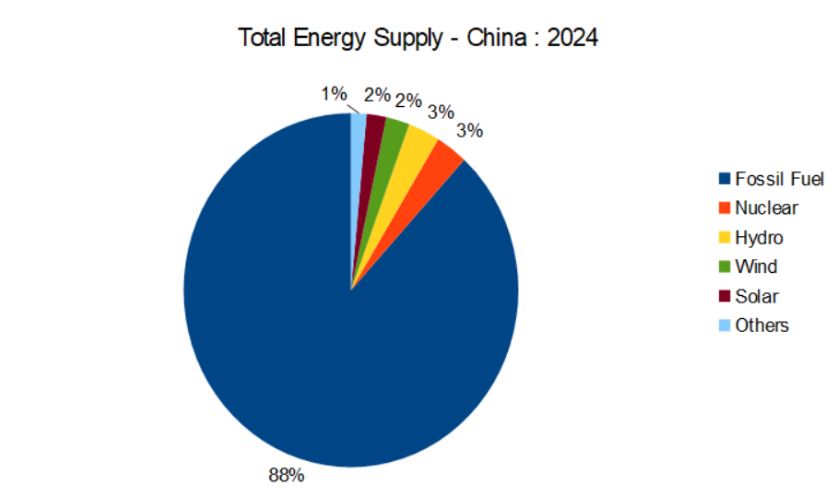
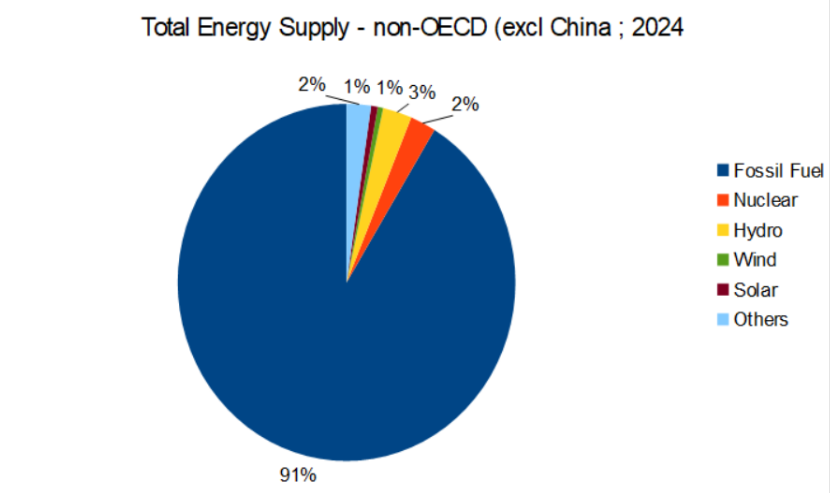
BBC misinformation
I COULD not resist googling ‘BBC China Renewables’! I used the ‘past year’ filter. You would be forgiven for not believing, having read this lot, that China gets only 4 per cent of its energy from wind and solar, a third less than we do here in the UK!
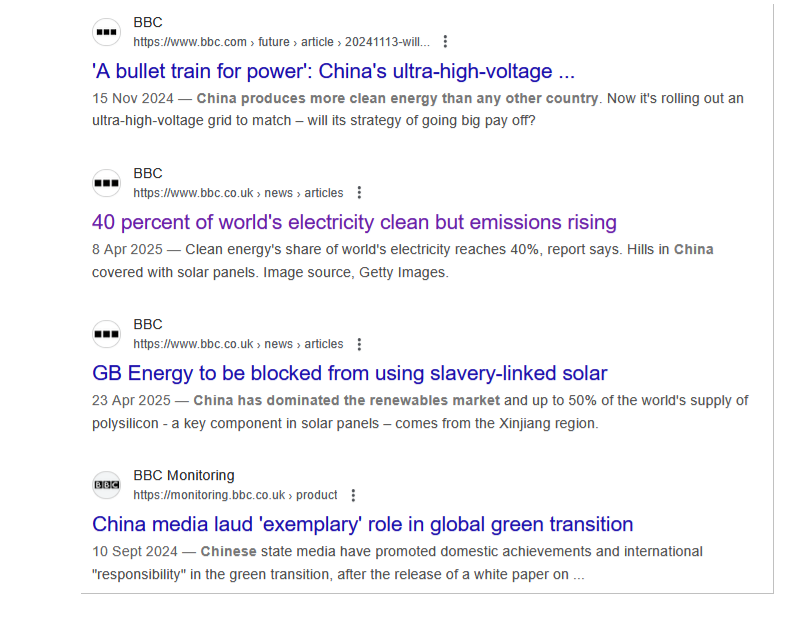

Valencia floods
Thanks to Trevor Willard, whose letter https://www.conservativewoman.co.uk/letter-of-the-day-74/ featured in TCW on Tuesday. He was right to complain about the latest BBC attempt to blame last year’s catastrophic floods in Valencia on climate change. Trevor is correct in pointing out that rewilding upstream has resulted in the destruction of dams and flood barriers, which were originally built to slow down the torrents which regularly come down from the hills during storms.
The history of Valencia is littered with severe floods because of the topography – warm, moist air coming from the Mediterranean rapidly rising as it hits the mountains inland and clashing with cold air from the upper atmosphere.
By far the worst floods in recent history hit Valencia in 1957, but records of floods there date back to the Middle Ages – one in 1517 left hundreds dead.
The BBC’s climate change lie is not borne out by the historical rainfall data in Valencia itself. If rainfall really was getting more extreme, it would be obvious in the plot of daily rainfall there.
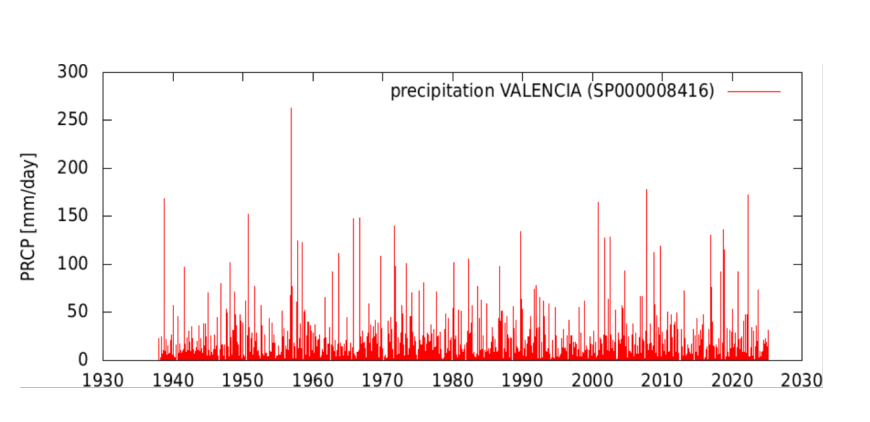
Daily Rainfall at Valencia 1937 to 2025
https://climexp.knmi.nl/start.cgi
Obviously the rainfall was much greater in the hills above Valencia. According to the Spanish Met Office, the town of Turis recorded the highest 24-hour total of 771mm last October, but even this was not as much as the 817mm which fell at the nearby village of Oliva in 1987.
We often hear these sort of ‘record-breaking claims’. But it is only in the last few years that hundreds of automatic rain gauges have been set up in these upland sites, where the highest rainfall totals occur. The rain gauge at Turis, for instance, was installed only in 2008. Claims of ‘records’ are therefore statistically meaningless, as there is no historical data to compare them with.
What made the floods so deadly, however, was not climate change – it was the diversion of the River Turia following the catastrophic floods in 1957. They were so bad that the government decided to divert the river to the south of the city. It seemed a good idea at the time! The project, which was finished in 1972, however, merely shifted the problem to the rapidly growing towns to the south, made worse by the concreting over of large areas there.
Even as far back as the Middle Ages, Valencia was built in the knowledge that it would regularly flood. Consequently buildings were constructed where possible on higher ground. But townships to the south like Picanya and Paiporta were originally built on dry land. The flood plain moved to them, not the other way round.
And as these towns grew, they became death traps, where the water would be funnelled with nowhere else to go.
It was a catastrophe waiting to happen.











